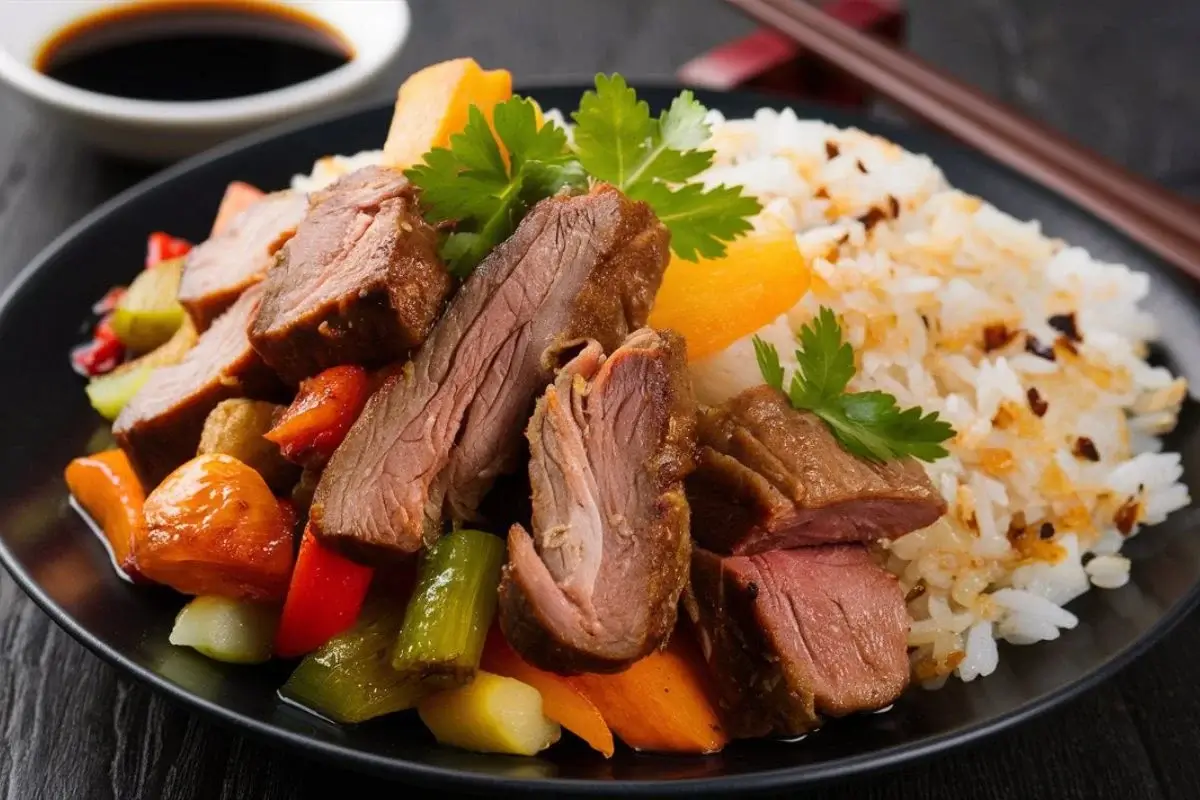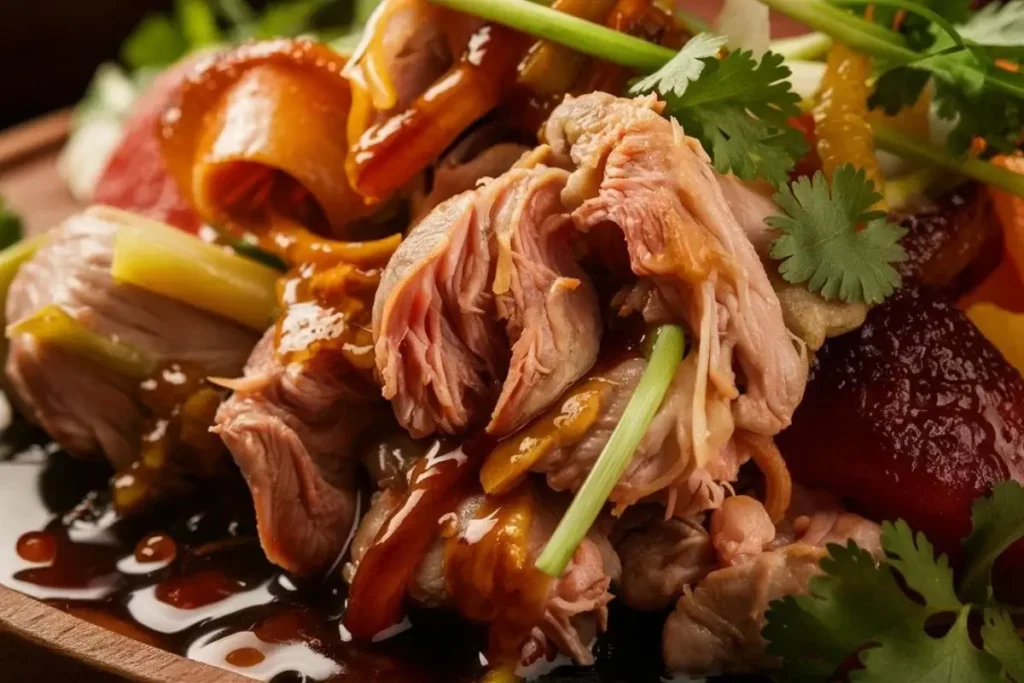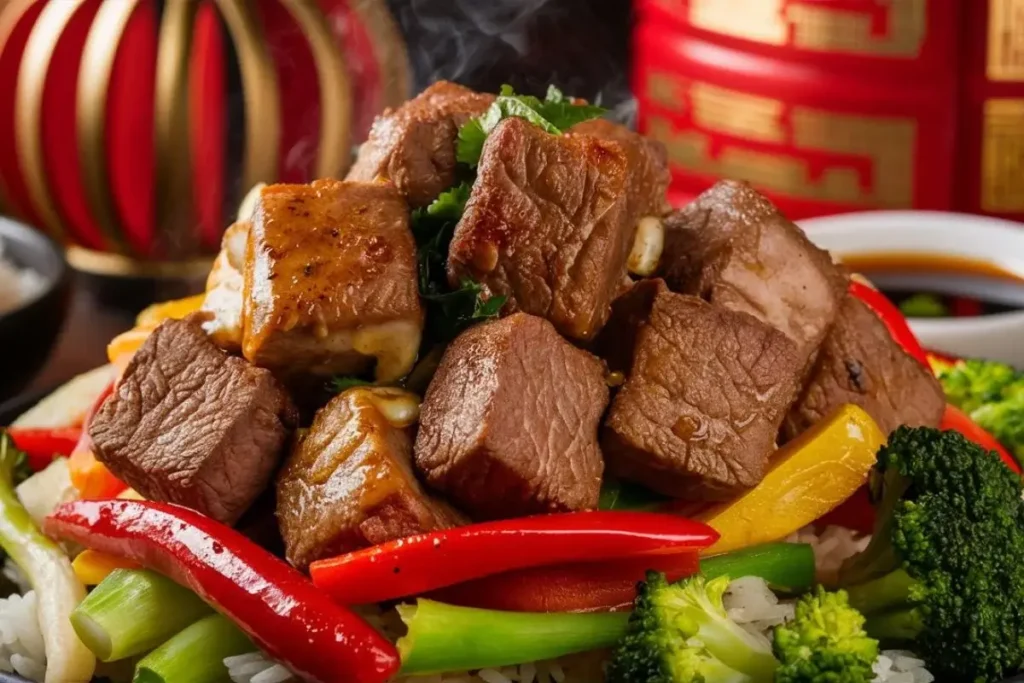Welcome to the captivating realm of meat tenderization, where culinary science blends with kitchen artistry, revealing the secret ingredient to tenderize meat! In this extensive guide, we’ll explore diverse techniques and secrets to turn even the toughest cuts into succulent masterpieces. Whether you’re a seasoned chef or a curious home cook, mastering the art of softening meat fibers can elevate your cooking to new heights. We’ll explore natural tenderizers, mechanical methods, and slow-cooking techniques, all without the use of pork or alcoholic ingredients. So, grab your apron, and let’s unravel the mystery of What is the secret ingredient to tenderize meat?
Overview of Meat Tenderization
Tenderizing meat isn’t just about making it easier to chew; it’s about enhancing flavors and transforming basic ingredients into something extraordinary. When you tenderize meat, you’re essentially breaking down the muscle fibers and connective tissues, which can make the meat tough. This process can involve a variety of methods, each suited to different types of meat and culinary outcomes.
The Science Behind Tender Meat
At its core, meat tenderization is about altering the structure of the muscle fibers and connective tissue. Two main approaches can achieve this: mechanical and chemical. Mechanical methods include pounding or piercing the meat with tools like meat mallets or tenderizing needles. On the other hand, chemical methods involve marinating the meat in acidic solutions like lemon juice or enzymatic fruit purees such as pineapple or papaya, which break down tough proteins.
Furthermore, cooking techniques also play a vital role. Methods like slow cooking or using a low-temperature oven can gently break down the fibers over several hours, resulting in meat that’s not just tender but also full of flavor.
By employing these techniques, you not only ensure a delightful dining experience but also maximize the natural flavors of the meat. And let’s face it, who doesn’t yearn for that melt-in-your-mouth sensation that only perfectly tenderized meat can provide?
In the upcoming sections, we’ll delve into each tenderizing method, offering practical tips and insights for your kitchen endeavors. Stay tuned as we explore the art and science of making meat tender, ensuring every meal is thoughtfully crafted, not just cooked.
Understanding Meat Tenderization
The Science Behind Tender Meat
Diving into the chemistry of meat tenderization, it’s clear that both acids and enzymes play crucial roles. When meat is treated with acidic marinades or enzymatic solutions, the proteins within begin to break down, which fundamentally alters their texture and makes them easier to chew.
Impact of Acids on Meat Texture
Acids, found naturally in items like citrus juices and vinegar, work by denaturing the proteins in meat. This process softens the meat and enhances its tenderness. However, the balance is key—too much acidity can have impacts such as making the meat mushy rather than perfectly tender. It’s vital to control the amount of acid and the marinating time to optimize the texture without compromising the integrity of the meat.
Exploring Enzymatic Tenderizers
Enzymatic tenderizers, such as papain from papaya or bromelain from pineapple, target the proteins in meat at a molecular level, breaking them down and resulting in a much softer texture. These natural enzymes are not only effective but also add a subtle flavor that enhances the meat’s overall taste. However, like acids, they must be used judiciously to avoid overly softening the meat, which can detract from the desired culinary experience.
By understanding these chemical interactions, cooks can skillfully select and apply the right tenderizing technique to enhance their dishes, ensuring that every bite is not only tender but also bursting with flavor.
In the next section, we will further explore how these natural tenderizers can be used practically in kitchen settings to achieve perfect results.
Natural Tenderizers and How to Use Them
Acids as Natural Tenderizers
Harnessing the power of acids to tenderize meat is a culinary trick as old as cooking itself. Ingredients like vinegar and citrus juices not only impart a zesty flavor but also perform the crucial function of breaking down tough proteins.
How Lemon Juice and Vinegar Work Their Magic
Using lemon juice or vinegar in marinades is a fantastic way to tenderize meat. The acids in these liquids gently unravel the protein structures in the meat, making it softer and easier to digest. For the best results, meat should be marinated for several hours, though not too long as this can lead to a degradation in texture. Remember, the goal is tender, not tepid!
Marinating Times and Techniques
The duration of marination is critical. Thin cuts usually require a few hours, while thicker cuts may benefit from an overnight soak in the fridge. However, avoid leaving the meat in acidic marinades for too long to prevent the outer layer from becoming mushy.
Enzymatic Tenderizers
Moving from acids to enzymes, let’s explore how these biological catalysts can tenderize meat effectively without compromising its texture.
Fruits as Enzymatic Powerhouses
Papaya, pineapple, and kiwi contain natural enzymes that are perfect for tenderizing meat. Papain from papaya and bromelain from pineapple are particularly effective at breaking down tough meat fibers. A simple puree of these fruits, applied as a marinade, can transform even the toughest cut into a tender delight.
Using Fruit Purees in Marinades
To utilize fruit purees effectively, apply the marinade and let it sit for an hour or two before cooking. This allows the enzymes sufficient time to act on the proteins without over-tenderizing the meat. This method not only tenderizes but also infuses the meat with a delightful, subtle fruitiness that enhances its natural flavors.
By incorporating these natural tenderizers into your culinary practices, you can achieve tender, flavorful meat that enhances any dish. Whether you’re preparing a quick weeknight dinner or a special feast, these techniques ensure that your meat will be the star of the show.
In the next section, we’ll cover mechanical methods to tenderize meat, providing practical tips for those who prefer physical techniques over chemical ones.
Mechanical Methods to Tenderize Meat
Mechanical Tenderization Techniques
While chemical methods work wonders, sometimes the good old-fashioned mechanical approach is just what you need to make your meat melt-in-your-mouth tender. These techniques are straightforward and require no special ingredients, just a bit of elbow grease!
Pounding with a Meat Mallet
One of the most traditional methods to tenderize meat is by using a meat mallet. This tool, often equipped with a textured surface, helps break down the tough fibers of the meat. Simply place the meat between two pieces of plastic wrap to avoid splattering and gently pound it. This method not only tenderizes but also helps the meat cook more evenly, which is crucial for cooking methods like pan-searing or grilling.
Scoring Meat
Scoring, or making shallow cuts on the surface of the meat, is another effective mechanical method. This technique not only helps in tenderizing but also allows marinades and seasonings to penetrate deeper into the meat, enhancing the flavor profoundly. It’s particularly useful for thicker cuts that need more help absorbing flavors and breaking down fibers.
Choosing the Right Technique
The choice of technique often depends on the type of meat and the desired cooking method. For tougher cuts, such as flank or skirt steak, a combination of pounding and scoring can prepare the meat perfectly for quick cooking techniques like grilling or broiling.
By mastering these techniques, you can ensure that even less expensive cuts of meat turn out tender and delicious. It’s all about knowing how to treat your meat right, and with these methods, you’re on your way to culinary success.
In the upcoming section, we’ll explore cooking techniques that further enhance meat’s tenderness, perfecting the art of tender meat preparation through controlled cooking environments.
Cooking Techniques That Tenderize Meat
Slow Cooking and Low-Temperature Cooking
Cooking techniques that apply gentle, prolonged heat are exceptionally effective at tenderizing meat. These methods allow tough fibers to slowly break down, transforming them into tender, flavorful dishes that are simply irresistible.
The Magic of Slow Cooking
Slow cooking is an art that turns tougher cuts of meat into succulent, fall-off-the-bone delicacies. Cooking at a low temperature for an extended period allows the meat’s connective tissues to break down and gelatinize without losing moisture. This method suits cuts like brisket or shoulder, benefiting from long, gentle cooking for optimal texture and flavor.
Benefits of Low-Temperature Oven Cooking
Similarly, using a low-temperature oven can achieve much the same effect as slow cooking but in a different context. This technique is great for larger cuts that need to be cooked evenly and gently. Oven temperatures around 275°F to 325°F are ideal for these purposes, allowing the heat to penetrate deeply into the meat without overcooking the exterior.
Optimizing Cooking Settings
To make the most of these techniques, it’s important to monitor the cooking process closely. Using a meat thermometer can help ensure that the meat reaches the perfect tenderness without becoming overcooked. Also, allowing the meat to rest after cooking can help redistribute the juices, which enhances the tenderness and flavor even further.
By utilizing these slow and low-temperature cooking methods, you can transform even the toughest cuts into dishes that are not just edible but truly delightful. These techniques are not just functional; they’re transformative, providing consistently delicious results that are sure to impress.
In the upcoming section, we’ll address frequently asked questions that home cooks have about the secret ingredient to tenderize meat, dispelling misconceptions and offering practical advice.
FAQs
In this updated section, we’ll tackle some common questions about tenderizing meat in Chinese cuisine, offering insights to enhance your cooking techniques.
Does baking soda really tenderize meat?
Yes, baking soda is also a secret ingredient to tenderize meat. It works by raising the pH of the meat, which helps to break down protein structures, making the meat softer and easier to chew. However, it should be used sparingly and rinsed off thoroughly to avoid any soapy taste.
What is the best ingredient to tenderize meat?
While several ingredients can tenderize meat, natural enzymes found in fruits like pineapple, papaya, and kiwi are among the best. These enzymes break down proteins effectively, making the meat tender without the need for chemical additives.
What do chefs tenderize meat with?
Chefs employ various methods to tenderize meat, including mechanical techniques like pounding, chemical tenderizers such as baking soda, and enzymatic marinades using fruits like papaya or pineapple.. The choice often depends on the specific dish and the desired texture.
How can I tenderize meat quickly?
For fast tenderization, thinly slice and marinate with acidic components (like vinegar or citrus juice) or natural enzymes (from fruits like kiwi or pineapple). These methods can significantly soften meat in a few hours, especially when thinly sliced to maximize exposure to tenderizing agents.
By understanding and using these methods, you can achieve tender and flavorful meat in your dishes, enhancing both the dining experience and your skills in the kitchen.
Conclusion
Summing Up the Tenderizing Secrets
We’ve explored various methods, uncovering the secret ingredient to tenderize meat, turning tough cuts into succulent dishes. From the enzymatic power of papaya and pineapple to the gentle unraveling of fibers in slow cooking, each method offers unique benefits suited to different types of meat and culinary goals.
By integrating these techniques, you enhance both the texture and flavor of the meat, making every meal memorable. These secrets are more than just tips; they’re gateways to culinary excellence, ensuring every dish is crafted with knowledge and passion.
Remember, the key to mastering meat tenderization is practice and patience. Experiment with different methods and find the combinations that work best for your cooking style and preferences. Whether you’re preparing a family dinner or a special feast, these techniques will ensure that your meat is always tender and delicious.
Thank you for joining us on this culinary adventure. We hope you feel inspired to try these techniques in your kitchen, creating dishes that are truly tender and tantalizing. Happy cooking, and may your meals always be mouthwateringly tender!
This guide on the secret ingredient to tenderize meat offers a comprehensive overview of tenderization techniques to enhance your culinary skills. Whether using natural tenderizers, mechanical methods, or slow-cooking, you now have the tools to ensure tender and delicious meat dishes.



